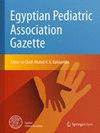Clinico-laboratory outcomes of plasma transfusion in the Egyptian’s pediatric intensive care units—a prospective observational study
IF 0.5
Q4 PEDIATRICS
引用次数: 0
Abstract
Despite the paucity of data supporting their indications, plasma transfusions (PT) are regularly administered for critically ill patients (CIP) in pediatric intensive care units (PICU). The aim of this study was to identify the actual indications for PT in the Egyptian’s PICUs and determine to what extent it affects the clinic-laboratory outcomes for CIP. A prospective observational study was conducted for 6 months on 180 CIP in PICUs of Cairo University Hospital who received plasma for at least one time during their length of stay (LOS). Full history, examination, and investigations were obtained from the medical records. Plasma was transfused in 64.4% of the studied population to support moderate and severe critical illness identified by multiple organ dysfunction score (MODS). Meanwhile, subjective-based physician conceptions accounted for 12.8% of all indications for plasma transfusion. PT in CIP was associated with a significant reduction in platelet count, prothrombin time, partial thromboplastin time, and international normalized ratio with p-value < 0.001, while there was a significant increase in hemoglobin level with p-value < 0.001. A statistically positive correlation exists between the time interval between admission and 1st PT and LOS with a p-value < 0.001 being shorter with earlier transfusion. Of the 180 patients enrolled in this study, seventy patients (38.9%) died, while 110 patients (61.1%) survived. A statistically significant increase in mechanical ventilation (MV) (p = 0.004), total number of PT (p < 0.001), and MODS score (p < 0.001) were recorded in dead CIP compared with survivors. Moderate and severe critical illness identified by MODS was the most frequent cause for PT in the Egyptian’s PICUs. Early, precise, and objectively based PT has a strong role in improving the outcomes in CIP.血浆输注在埃及儿童重症监护病房的临床-实验室结果-一项前瞻性观察研究
尽管缺乏支持其适应症的数据,血浆输注(PT)仍是儿科重症监护病房(PICU)重症患者(CIP)的常规治疗方法。本研究的目的是确定PT在埃及picu中的实际适应症,并确定它在多大程度上影响CIP的临床-实验室结果。对开罗大学医院picu内180例在住院期间至少接受一次血浆治疗的CIP患者进行了为期6个月的前瞻性观察研究。从医疗记录中获得了完整的病史、检查和调查。64.4%的研究人群接受血浆输注,以支持由多器官功能障碍评分(MODS)确定的中度和重度危重疾病。同时,医生主观观念占所有血浆输血指征的12.8%。CIP患者PT与血小板计数、凝血酶原时间、部分凝血活酶时间、国际标准化比值显著降低相关,p值< 0.001,与血红蛋白水平显著升高相关,p值< 0.001。入院时间与第一次PT和LOS之间存在统计学上的正相关,p值< 0.001的时间间隔越早输血越短。入组的180例患者中,70例(38.9%)死亡,110例(61.1%)存活。与存活者相比,死亡CIP患者机械通气(MV) (p = 0.004)、PT总次数(p < 0.001)和MODS评分(p < 0.001)均显著升高。MODS鉴定的中度和重度危重疾病是埃及picu中最常见的PT原因。早期、准确、客观的PT对改善CIP的预后有重要作用。
本文章由计算机程序翻译,如有差异,请以英文原文为准。
求助全文
约1分钟内获得全文
求助全文
来源期刊

Egyptian Pediatric Association Gazette
PEDIATRICS-
自引率
0.00%
发文量
32
审稿时长
9 weeks
期刊介绍:
The Gazette is the official journal of the Egyptian Pediatric Association. The main purpose of the Gazette is to provide a place for the publication of high-quality papers documenting recent advances and new developments in both pediatrics and pediatric surgery in clinical and experimental settings. An equally important purpose of the Gazette is to publish local and regional issues related to children and child care. The Gazette welcomes original papers, review articles, case reports and short communications as well as short technical reports. Papers submitted to the Gazette are peer-reviewed by a large review board. The Gazette also offers CME quizzes, credits for which can be claimed from either the EPA website or the EPA headquarters. Fields of interest: all aspects of pediatrics, pediatric surgery, child health and child care. The Gazette complies with the Uniform Requirements for Manuscripts submitted to biomedical journals as recommended by the International Committee of Medical Journal Editors (ICMJE).
 求助内容:
求助内容: 应助结果提醒方式:
应助结果提醒方式:


